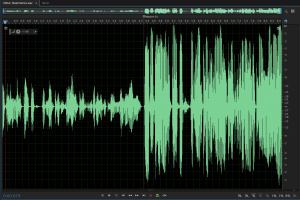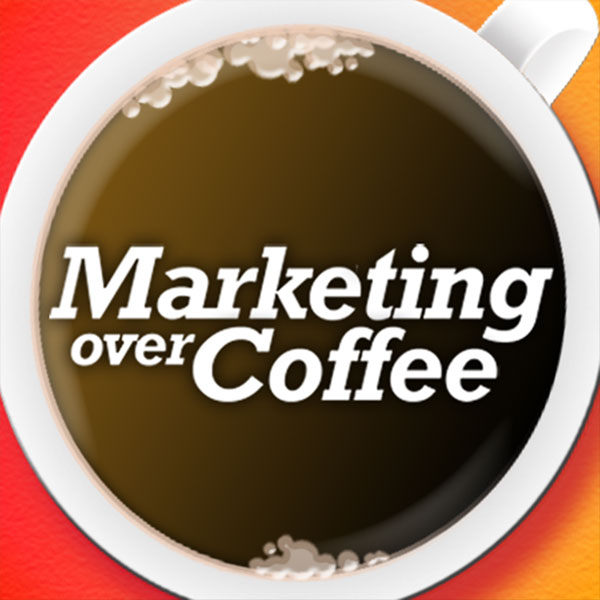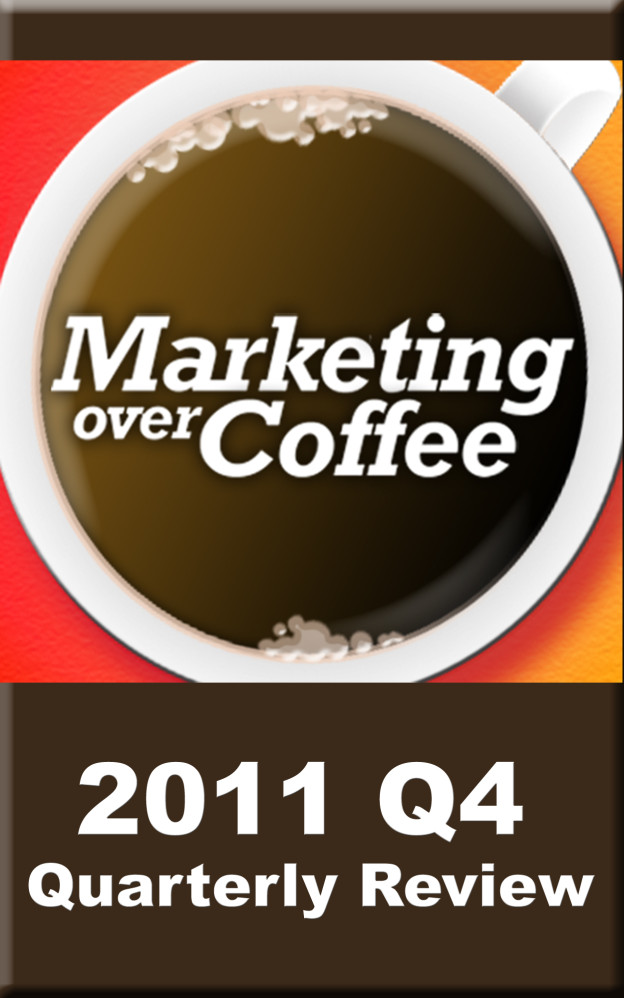 A few weeks ago I a great discussion with Seth Godin about his new book We Are All Weird. You can hear the original interview over at Marketing Over Coffee (or just buy the App). I had a request for a transcript, and since I went to the expense of having it written up I thought it was worth posting:
A few weeks ago I a great discussion with Seth Godin about his new book We Are All Weird. You can hear the original interview over at Marketing Over Coffee (or just buy the App). I had a request for a transcript, and since I went to the expense of having it written up I thought it was worth posting:
John Wall: So your new book here is “We Are All Weird” on the Domino Project available on Amazon. Tell us about “We Are All Weird”, what’s the idea and how did this all come to you?
Seth Godin: You know this is possibly the biggest idea I’ve had in terms of it all coming to me at once and I’ve been writing the last couple years about the death of the industrial age and the beginning of a new age. And I’ve been talking about how the industrial revolution created all this wealth. It created a culture around it because the wealth brings culture with it. It created standards, it created public school, it created expectations. But what I realized, just a little while ago, is that most insidious of all, it created a standard of normal. And by that I mean both statistical, normal, the center of the bell curve, and cultural, normal as “just like us”. And so what we do in our society is we make stuff in a factory, whether that factory makes insurance policies or widgets, and by default we have to pick the model we’re going to make. We have to pick whether the scissors are for left handed people or right handed people . We have to pick whether the car has four on the floor or automatic transmission. And what factory owners want, what shareholders want, is for everyone to be normal because that’s more efficient if you’re going to do mass manufacturing. You want to make one thing any color as long as it’s black.
If you’re going to do mass marketing you want to have one ad that appeals to the largest possible number of people. And so we have a cultural imperative to be normal and what the internet is doing that’s so revolutionary is it’s enabling us to do what we want to do; which is be weird. We want to be left handed or gay or play soccer barefoot. We want to buy a 21 foot long, 21 pound kayak that’s not the one that they sell at Eastern Mountain Sports. We want to have the people who follow us on twitter follow us and not the other people. And so in this world where everyone has a microphone and everyone has a choice; if your goal, if your requirement, is that the world be normal, you’re in for a whole boatload of stress.
JW: Right and so at the core of this you kind of kick off early in the book with the four forces of weird. Kind of what’s behind this weirdness, if you could tell us about that.
SG: Well, you know I, as always, am picking words and sometimes I define those words in ways that don’t necessarily match the way the dictionary would say it. And I think that’s important because if we don’t have words available to us it’s very difficult to talk about things. We don’t have a word for twitter other than the brand name twitter. So that’s why the brand name means so much. So what I did here was I grabbed a few words like “weird” which we’ve already talked about and “rich”. And what’s going on in “rich” is… Some people think rich means more money than you have, right? And other people think rich means enough money to take a private jet. I’m saying that all rich is, is enough money to make choices. That once you go beyond having enough to subsist on you are rich in the sense that you can make choices. So I want to lay out that ground work of what I’m about when I say “weird” and “normal” and “rich”.
So let’s talk about the four forces, the first force is that creation has been amplified, and what I mean by that is when I started out in the book business 25 years ago; they maybe published 30 business books a week and now they publish 500 business books a week and ebooks it’s 5000. So lots of people have been given a voice. Second force, is that when you’re rich you get to do what you want and you get to be weird. And this is why I think that the world is getting so much smaller because when someone enters the nascent middle class or lower middle class of India for example they now have a choice about what to eat and what to drive and where to live. They didn’t have that choice for 10,000 years. Every ancestor in their whole family had to stay on that farm growing that thing. Now they have a choice. Number 3, marketing is something that enables culture. And what marketing can do now is not just be on All in the Family or NBC on Thursday night. Marketing can reach the weird in lots of different ways. So if you do some sort of search for a Dracula costume for kids on Google an advertisement will find you; and that will enable you to buy something. And the last one is the tribes have become better connected, right? That when you’re all by yourself and you’re weird it’s easy to have your weirdness fade away. But when you’re surrounded by people who have the same weird as you, your weirdness is amplified and so these tribes keep ending up becoming more and more powerful which furthers this cycle.
JW: Now I was glad to hear you say that you feel this book is big and overarching because that was one thing that really shone through for me when I was reading it. You start off with weird and you talk about mass market, mass productions and things like that and you’re kind of right in line with a lot of stuff you’ve done. But then near the end you kind of blow the doors off and you say “Well this is the same for mass charity, mass religion, mass politics, mass education. We can look at all of these things in a different light”. So I guess you talked a lot about charity in the past too. If you could talk a little more about that, how is this shifting charity and what’s happening there as far as choice.
SG: Sure, now I’ll talk about charity and then I’ll talk a little bit about politics. So aid is something we do when someone’s drowning. We throw someone a life preserver because otherwise they’re going to die. And I don’t think we’re going to find anybody who says we shouldn’t throw a life preserver to a kid down the street who is in a pool about to die. And as Peter Singer explains, we can expand down the street now way further. So if there’s a kid in Somalia who is about to die or you can spend 5 bucks to have an extra dessert at lunch, obviously you should save that kid in Somalia who is about to die. The problem with aid is in addition to it not scaling, it just leads to the endless emergency of poverty. That if all you’ve done is throw someone a life preserver who’s going to need a life preserver tomorrow too, we’ve got a problem.
And that leads to this notion of trade and what trade does in international development is – it’s a transaction. It’s a business transaction and no one enters a transaction unless he or she is going to benefit. So if you’ve got a solar lantern it’s far better than kerosene and for listeners who haven’t been aware of this, about a billion people in the world, as soon as the sun sets it’s pitch black in their whole life until the next morning unless they light a kerosene lantern. Kerosene is one of their biggest expenses, it burns down their house, and it gives them lung cancer. Well we can now sell them, for 7 dollars, a solar lantern which will last for a year and eliminate the need for kerosene, pay for itself in 90 days and make it so it’s not dark right. Well the aid approach is: let’s make as many solar lanterns as we can and drop them off places. The trade model is: here you want to buy this solar lantern? Here’s why it’s better. And what happens when you do that is you give all the power to the person in the underprivileged country you’re trying to sell it to. And they say “Nah, it’s not the right color.” Now if you’re doing aid you can say “screw you, it’s black or nothing.” When you’re doing trade you’ve got to say ” Yeah, well ok we’ll have to make it in a better color.” Because by shifting the power to this weird person who has a choice you just made them rich. Because by my definition of rich, rich is about making choices; so when we can go to a billion or two billion people on the planet and start making a profit by giving them choices.
We’re going to enrich them and enrich us and it leads to this virtuous cycle and I’ve seen it with my own two eyes. When someone in India or Katali Kenya buys a cell phone they make money the next day. And the day after and the day after that from having a connection to the world. And as they make money they make more choices and as they make more choices they get richer still. And so I met a woman named Lucy who is a millionaire. She has a million Kenyan shillings under her bed which is like 10,000 U.S. Dollars. And her next door neighbor has nothing with the same amount of land. And Lucy got that way not by dating a UNICEF worker or a U.N. worker. She got that way by starting down this cycle of making her own choices and embracing her own personal weirdness.
So why all the stress in American politics? I mean anyone who watches any of these debates sees what’s going on. There’s all these schisms and the paradox of American politics is, by definition, a popularly elected official when 300 million people are voting has to be normal. There’s no room for weird if you need a majority and yet everything else in our culture is reinforcing splinter groups and reinforcing special interest groups and reinforcing people who have a budget and have lobbyists and can get online and yell and buy ads and yell and whatever. So politicians are caught because in order to get started in any given party you have to pander to the loudest, weirdest group because they’re the ones that show up. But then you have to somehow shift gears and move to the mainstream when there is no mainstream; and inevitably you’re going to disappoint a loud tribe or many loud tribes. And the difference today from 30 years ago is that we’ve gotten so fractious that any one of these weird groups is willing to bring down the whole system if it serves their ends. And so we can wring our hands at this and look at it but basically what we have to understand is that endemic into the system is built this dissatisfaction, that’s coming from empowered weird people tribing up, grouping up and criticizing whoever isn’t as weird as them who happens to be in power.
JW: So does that naturally lead to politics overall becoming less effective in the future or do you feel that there will be topics and common ground that the tribes will find to make things work?
SG: Well you see you know what Eli has written about in The Filter Bubble is this notion that if you’re going to spend all day watching Fox News or all day on the politics section of the Huffington Post it looks like the other side is invisible, right? That we can create our own bubble in Facebook and only see people like us who are weird like us; and only interact with those people. Even if we live in a town that’s different than us we can find fellow travelers and so we’re going to get more and more insular about this and government is going to get more and more paralyzed. Because this notion of the people down the street being just like me is forever altered and instead there’s this meanness toward the other that comes from finally being permitted to embrace your weirdness. And I’m titling the book really clearly, I’m weird too, I’m not saying these other guys are wrong. I’m just as weird as everybody else and what I think we’re headed for is a massive shift in our political landscape. And there are two books about this that are just occurring to me. One is Cory Doctorow’s book called “Eastern Standard Tribe” where he wrote about people aligning not by where they live but by who they agree with and politics changing forever because of that. And another one is a book-and I’m drawing a blank on the title about how it’s almost inevitable that the United States is going to break up into 8 or 9 countries.
And that sounds absurd but it sounds a lot less absurd today than when I read it 3 years ago. I think that when we realize that geography is just one of many conveniences and as geography becomes less important I wouldn’t be surprised at all if in my lifetime we ended up with regional governments that were far more important than whatever massive thing we grew up with.
JW: When you talk about that does it even break away completely from geography though? You know where you could be a member of the state but not live near the folks, or that the demographic breakup of the United States naturally fits more towards 8 different segments.
SG: Well see that’s Corey’s point. Corey’s point is if we assume that we can get to a world where you don’t have to defend your land with guns then geography stops being one of the top 5 most important things in your life. And if most value is transmitted in a digital way, if most communication is somehow digitized, if when we get together we’re getting together with people inside our bubble then geography stops being this essential driver. If you think about it it’s an artifact of the farming world and the factory world. It’s not an artifact of the digital world. So I know I’m sounding really crazy out here but marketing has already gotten us where we are today. Marketing made us consumers, marketing invented public schools. We know it. All of those things are a result of how we make money and my point is if we’re going to start making money in this global tribal way – you know Squidoo is the company I run, we have an office in Virginia, an office in California, an office in Italy, an office in Texas and probably one soon in Canada. Well all an office is where someone’s sitting with a laptop. Once that starts happening this notion of geography really goes out the window.
JW: Another angle on the that too, before we hook back into more pure marketing stuff is education and I noticed some of the stuff that you were talking about was brought to my attention in Sir Ken Robinson’s TED talk; the hugely popular one there, if you could talk a little bit about those changes and education and how to get away from mass there.
SG: Ok well, whenever I talk about this people look at me like I’m making it up and I’m not. So here’s the story: factories were a revolution in the 1880s because almost everyone lived on a farm, worked outside, made their own hours and had freedom. And factories said: we want you to leave home, move into a crowded apartment and work 12 hours a day in a dark, dangerous facility. And this was massive. Clay Shirkey’s reported that basically in Manchester England, 20 years everyone was drunk. Because it was the only way they could get through the day. They didn’t have coffee carts they had vodka alcohol carts, gin carts going up and down the street. And so several things happened there, one we sent a lot of kids to work because kids were cheaper and more obedient and it took the K1u K1ux K1an to fight this and get kids into public school because selfishly they said “You’re taking jobs away adults”. So that was their contribution but in order to get the industrialists to go along with this we invented basically public school, compulsory education. And it was organized to train kids to sit in straight rows, be treated as a batch, follow orders, do what they were told and conform.
That’s why we invented it, to give people just enough training so they could then leave and go to work for the factory to make the town rich. And we still have that built in to the very nature of school. Well then school gained its own constituents and its own unions and its own money and everything else. And so people look at this school industrial complex and they say “well what would we do if this was a widget factory,” And the answer is we test and measure and improve. And so this whole notion of school needing to be better at turning out testable units is now ingrained into the whole system which could be fine if testable units were what we needed to create value. And in fact it’s not, it’s the opposite, that if we look at the companies that are growing if we look at the individuals who are making a profit none of them, not one, are cheap compliant cogs. We don’t reward that anymore, right? That’s a race to the bottom.
If we needed a job done like that we’re going to get it done by someone far away who works for way less in for worse conditions than the people listening to this are willing to do. And so one way I said in Lynchpin is: if I can write down exactly what you do all day I can find someone cheaper than you to do it. And so using school to churn out competent rules followers is foolish because we don’t have a competence shortage. So what Sir Ken argues is: if what we value is the ability to solve interesting problems and be creative then why on earth aren’t we teaching that? And please don’t tell me it’s not teachable because of course it’s teachable. The reason we’re not doing it is it’s hard to industrialize. It’s really hard to write down a lesson plan and really hard to demand that someone with one year teacher’s college walk into a bunch of kids who probably didn’t get the attention they deserve from their parents and get that group of kids to not only conform enough to be together but also to believe in themselves enough to be creative problem solvers. But that’s the only place value’s going to come from going forward.
JW: One sound byte you’ve got on there that really hooked me is ” Mobile is As Weird as Media Gets” if you could talk about that and where that goes.
SG: Right, so the first time someone said to me “mobile is the future of media” was 15 years ago and every 9 months someone says “You need to change Squidoo, you need to this, you need to do that, because mobile is the future of media.” And the reason it hasn’t happened yet is not because of the technology nor is it because of the consumer. It’s because the advertisers hate the fact that no one wants to see a mobile ad, unless, big unless, it’s all about them, where they are right this minute; because if there was a mobile ad about who you are, what you’re doing right this minute, where you are, we’d love it. If I’m about to walk into a store and with my permission my phone tells me the store next door has exactly the same item for 20 dollars less, I’m delighted. I’d be annoyed if I didn’t get that alert, right? If I’m on my way to catch a flight and someone (and I’ve permitted them to know this) knows I’m about to fly to L.A. and they have an empty seat on their plane and their willing to give me the empty seat for half of what I paid Delta, I’m in. So the problem is: that’s weird. That’s not mass, that’s the opposite of mass because my needs in that moment belong only to me. And advertisers don’t know what to do with that.
JW: Another thing is interesting where this kind of spins off into is: the obligation of the weird. If you’re weird there’s some things that you’re expected to do. You had some examples and talked about driving markets and if you could explain that.
SG: Sure, so one of the things that being weird seems to bring with it, something that we’re organized for, which is selfishness. You say, well “it’s all about me I have all the power so I’m going to do what I want.” But tribes fly in the face of that, because what a tribe says is “if this is important enough to us, then we better organize to make things happen because no one else will.” So that’s how you get Sir Christopher Wren building a beautiful cathedral. He built the cathedral for the tribe not for the outsiders. If you want more operas to get written then you better go buy all the new operas that are available on dvd or cd; because if you don’t buy them no more of them are going to get made. If you read about something on boing boing that seems to appeal to your tribe, that someone’s written a great short story about unicorns and you’re into unicorns or someone has come up with a piece of furniture that’s also a drum set and you’re fascinated by it, you have an obligation to buy it right now. Because if you don’t and you’re one of the few members of this weird tribe don’t expect that the world is going to make more stuff for your tribe. That this notion that we have to keep dancing faster and faster to entertain those of our tribe while they sit there with their arms folded and take no action, works in the short run but then it runs out of fuel.
And there’s a really fascinating thing to talk about here. If you look at the Amazon best seller list all the time, in the top 25 books are books that appeal to Fox News viewers. All the time. And there’s almost no books that would appeal to the kind of person who listens to Air America radio, the kind of person who’s on the progressive side of the scale. Why? And the reason is because when Glenn Beck says go buy a book, 50,000 people rush and go get it. And that act and the fact that publishers know that’s going on, gets publishers to publish more books for that tribe. And so it’s really interesting to me, for example you’ve been doing this great work for how long, couple years, three years?
JW: Four years. Yeah.
SG: Four years. It would seem to me that with the listener base you have they should be lining up and saying “Just write anything, make a product we’ll give you 20 bucks just keep doing this.”But instead the weird mantra to date has been “me, me, me, me, me” not “how do I put some stuff up so that we get more flow through coming.” And this was part of the magic of the Zagat’s Guide. What Tim and Nina Zagat did for people who loved restaurants is they created a focusing mechanism so that the weird few, the 3 percent of people in any given city, could organize around the best restaurants. So that way restaurants could compete against each other to be one of the best restaurants. Because they knew that if they got on that list the traffic would come. And so in that short riff where I talk about the obligation of the weird, it’s very simple: If you love something you better support it or it’s not going to happen anymore.
JW: Alright and so the book’s avalaible as part of the Domino Project. I just want to touch on that for a second and I know you’ve got an interesting thing here where the hard copy version’s only available with 10,000 copies out there and that’s it. So if you could talk about that and just how things are going with this project in general.
SG: The goal of the project was to make a ruckus. I’m happy to declare victory. I think that what we did is what we set out to do; which is come up with some ideas that publishers could steal. Because I have no desire to be a publisher. I have a desire for publishers to keep making more stuff I like. And I viewed the publishing community as pretty stuck with fear in the face of the death of paper. And we’re eight books in, we’ve had eight best sellers in a row, each time taking on advice about building a subscription base, a permission base anyway. Coming up with interesting formats, if we do something on paper we’re going to do it in a way that’s worth owning. We do something digital we’re going to price it in a way that reflects its costs and make it so that it’s likely to spread. So we set out to do all those things and we have, I hope, at some level succeeded. Not any of the books we’ve done have outsold a traditionally published book from a major publisher with a lot of hoopla. But every one of the books made a greater return on investment than any book published by a major publisher because the system is so efficient and our ability to reach the right people without waste was so high. So all those things are really thrilling to me.
In the case of “Weird” we limited the hardcover for a couple interesting reasons. The first is, no publisher has ever done that before because the math doesn’t support it. By the time you sell 10,000 copies in hardcover, you are in. That means you’re going to sell another 1,000 copies a month forever and that’s a lot of money. So why on earth with you say on 11,000 I’m going to stop making the hard cover, and for me it goes like this: Infinity is best handled by digits, that keeping a digital book in print forever is trivially easy. Whereas making sure you have enough hard cover books all the time forever is really hard and expensive. Number two is if its scarce, there’s a reason you’ll get it right now and that in fact is the biggest problem book publishers have – “how do I get someone to go get it right now”. So my model, which I hope will work out, so far it has, is a whole bunch of people (maybe some people listening to this) will rush and get it right now because they don’t want to be left out. And then once all the hard covers are gone and people are still buzzing about it, which I hope they will, you can still buy it, you just have to buy it in the kindle edition. And guess what, we make more money on a kindle edition than we make cutting down the tree shipping it to you, keeping it in a warehouse etc. So you benefit because you got it cheaper. We benefit because we didn’t have as many expenses and we’ve changed the conversation which is why me, the author, has written it in the first place.
We Are All Weird is available as hardcover or in Kindle version.






